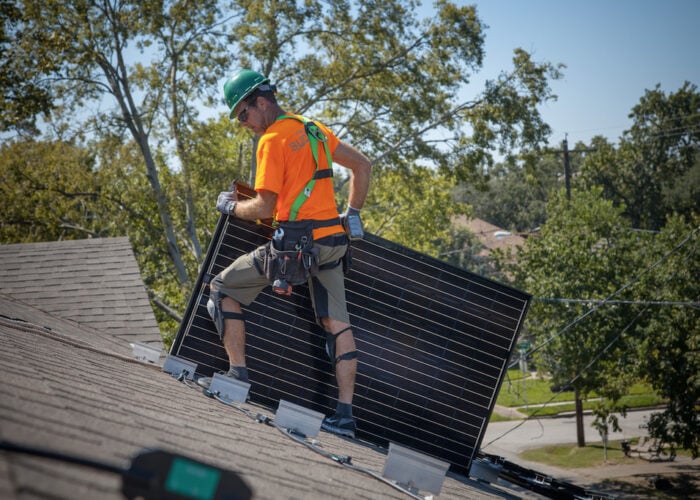With European subsidies being cut left, right and centre, it appears Japan could fill the void and become the world’s second-largest market for solar power generation. The country will be welcoming the international solar community with open arms with the introduction of its latest feed-in tariff, which has the potential to generate US$30 billion by 2016 for the local economy. Industry Minister Yukio Edano approved the new rates this week, effective July 1.
The scheme requires Japanese utilities to buy electricity from renewable sources at a rate of ¥42 for systems of 10kW or more for up to 20 years. This is double the tariff offered in Germany and more than three times that paid in China, reports Reuters.
Unlock unlimited access for 12 whole months of distinctive global analysis
Photovoltaics International is now included.
- Regular insight and analysis of the industry’s biggest developments
- In-depth interviews with the industry’s leading figures
- Unlimited digital access to the PV Tech Power journal catalogue
- Unlimited digital access to the Photovoltaics International journal catalogue
- Access to more than 1,000 technical papers
- Discounts on Solar Media’s portfolio of events, in-person and virtual
“The tariff is very attractive,” said Mina Sekiguchi, associate partner and head of energy and infrastructure at KPMG in Japan. “The rate reflects the government’s intention to set up many solar power stations very quickly.”
However, on the other side of the fence, Masami Hasegawa, senior manager of the environmental policy bureau of Keidanren, Japan’s most powerful business lobby states, “This is a mechanism with a high degree of market intervention by setting tariffs artificially high and making users shoulder the cost. We question the effectiveness of such a scheme.”
Independent research brokerage CLSA Asia-Pacific anticipates solar capacity in Japan will total approximately 19GW by 2016, alongside the government’s more optimistic 22GW by the end of March next year.
Beneficiaries
Since the legislative discussions for the promotion of renewable energy began last year, following the forced exit of Japanese ex-premier Naoto Kan and the Fukishima disaster, Japanese PV Energy Association announced last month that total shipments grew 5.8% for fiscal 2011.
“We believe the biggest change in market dynamics in the coming year will be a flood of cheap foreign panel manufacturers into Japan,” said CLSA analyst Penn Bowers.
Chinese companies in particular are targeting the Japanese market, especially with the latest verdict from the US Department of Commerce. In particular, companies like Suntech stand to benefit greatly, according to Smallcap Network. “The stock has lost nearly 18% in the last month and the news of Japan promoting solar energy may just be the right catalyst for this oversold stock to jump.”
Trina Solar has been poised to enter the Japanese market since February 2010 without a great deal of success. However, with the inauguration of a headquarters in Singapore to oversee the Asian market and these FiTs, this offers a more positive outlook for the company.
Reuters also lists Canadian Solar as a foreign solar panel manufacturer set to profit from Japan’s move away from nuclear power as well as Panasonic, Sharp and solar project installer Sekisui Chemicals.
“We no longer have enough electricity, especially during the day, and that is when solar power can help,” said Mikio Katayama, chairman of the electronics manufacturer Sharp Corp. and the Japan Photovoltaic Energy Association.
“This is a very good rate to promote investment and mega solars.”
TÜV Rheinland also set up operations in Tokyo last week. Dr. Manfred Bayerlein, CEO of TÜV Rheinland said, “With the new laboratory facilities in Japan, TÜV Rheinland underpins its global strategy of investing in the establishment of comprehensive infrastructure for testing renewable technologies such as solar, wind and fuel cells, as well as providing services related to electro-mobility. These activities are especially relevant in Japan, considering the recent changes in energy policies declared by the Japanese government.”
Electricity generation in Japan is predominantly from fossil fuels, which has risen to almost 90% due to 50 of the countries nuclear reactors being shut down. The rest of Japan’s electricity comes mostly from hydro power.
Residents who want to install panels on their homes will also be privy to subsidies. “The high purchasing price under the feed-in-tariff system is great news for us,” said Kazuhiko Katano, an official in Odawara's Energy Promotion Division. “The higher the price, the faster the penetration of panels will be.”
According to Bloomberg, Japan ranked sixth worldwide with 1.3GW of new installations last year, bringing its installed capacity to 5GW. Next year builders will erect roughly triple that level, or another 3.2GW to 4.7GW, New Energy Finance forecasts. One gigawatt is enough to supply about 243,000 homes in Japan.







